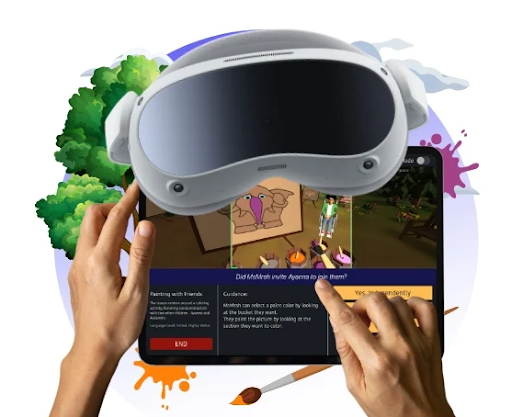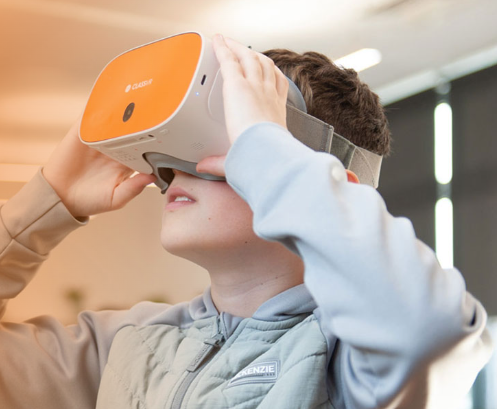Virtual Reality (VR) and Augmented Reality (AR) are no
longer just tools for gaming and entertainment—they are revolutionizing
education, especially for students with disabilities. These immersive
technologies create engaging, interactive, and accessible learning experiences
that cater to diverse needs. From helping students with autism practice social
skills to providing virtual field trips for those with physical disabilities,
VR and AR are breaking down barriers and opening up a world of possibilities.
In this blog post, we’ll explore how VR and AR are being
used in special education, highlight real-world examples, and discuss the
potential challenges and future of these technologies.
How VR and AR are Transforming Special Education
1. Immersive Learning Environments
- Example: Students with physical disabilities can take virtual field trips to museums, historical sites, or even outer space, experiences they might not otherwise have access to.
2. Social Skills Training for Students with Autism
- Example: Apps like Floreo use VR to simulate real-life scenarios, such as ordering food at a restaurant or navigating a busy street, helping students build confidence and independence.
3. Sensory Integration and Therapy
- Example: A
VR program might simulate a peaceful forest or beach, helping students
relax and focus during therapy sessions.
4. Motor Skills Development
- Example: An
AR app might project a virtual piano onto a table, allowing a student to
practice finger movements and hand-eye coordination.
5. Personalized Learning Experiences
- Example: A
student with dyslexia might use an AR app that highlights and reads text
aloud, making reading more accessible and engaging.
Real-World Examples of VR/AR in Special Education
- Floreo (USA):
- A VR
platform designed to teach social, behavioral, and communication skills
to individuals with autism.
- Features
interactive lessons on topics like making eye contact, recognizing
emotions, and following safety rules.
- A VR
headset and platform designed for schools, offering immersive lessons in
science, history, and more.
- Includes content specifically designed for students with special needs, such as sensory-friendly experiences.
- An
AR app that allows students to create and interact with 3D models.
- Can be used to teach spatial awareness, creativity, and problem-solving skills.
- A VR
app designed to help individuals with autism manage anxiety.
- Uses gamification to teach coping strategies and mindfulness techniques.
Challenges and Considerations
While VR and AR offer exciting possibilities, there are
challenges to consider:
Training: Teachers need proper training to effectively integrate VR and AR into their lessons.
Accessibility: Not all VR/AR tools are designed with disabilities in mind, so it’s important to choose inclusive technologies.
Screen Time: Balancing immersive technology with other forms of learning and physical activity is essential.
The Future of VR/AR in Special Education
The potential for VR and AR in special education is vast. Emerging trends include:
Wearable AR Devices: Glasses or headsets that provide real-time support, such as translating spoken language into text for students with hearing impairments.
Collaborative VR Classrooms: Virtual spaces where students from around the world can learn together, regardless of physical limitations.
AI Integration: Combining VR/AR with artificial intelligence to create even more personalized and adaptive learning experiences.
Conclusion:
Virtual and Augmented Reality are more than just futuristic
gadgets—they are powerful tools that can transform the lives of students with
disabilities. By creating immersive, engaging, and accessible learning
experiences, VR and AR are helping to level the playing field and unlock new
possibilities for learners around the world.
However, to fully realize their potential, we must address
challenges like cost, accessibility, and training. By investing in these
technologies and sharing best practices, we can ensure that every student has
the opportunity to thrive.






Post a Comment